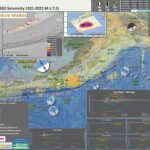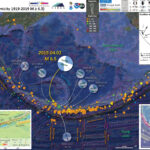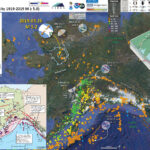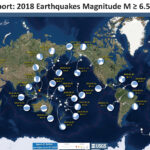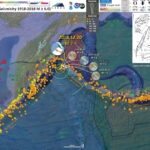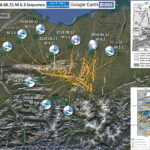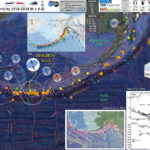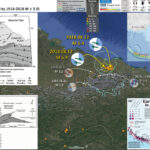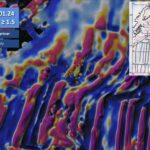A few days ago, I was passed out on my couch (sleep apnea) and for some reason I awoke and noticed that I had gotten a CSEM notification of a large earthquake offshore of Alaska. Well, after looking into that,…
Earthquake Report: central Aleutians
A couple days ago, in my inbox, there was an email from the Pacific Tsunami Warning Center about an earthquake along the Aleutian Islands, near Rat Island, Alaska. However, this earthquake was not along the megathrust subduction zone fault there…
Earthquake Report: Northern Alaska
At shortly before 13:30 today in northern Alaska there was a large earthquake, with a magnitude of M=5.1 (now M 5.0). https://earthquake.usgs.gov/earthquakes/eventpage/ak0193wxcfea/executive Many of us are familiar with the Good Friday earthquake, a megathrust subduction zone earthquake. This earthquake has…
Earthquake Report: 2018 Summary
Here I summarize Earth’s significant seismicity for 2018. I limit this summary to earthquakes with magnitude greater than or equal to M 6.5. I am sure that there is a possibility that your favorite earthquake is not included in this…
Earthquake Report: Bering Kresla / Pacific plate
We just had a large earthquake in the region of the Bering Kresla fracture zone, a strike-slip fault system that coincides with the westernmost portion of the Aleutian trench (which is a subduction zone further to the east). At first,…
Earthquake Report: Alaska
What a day. I started by waking up about 5:43 AM (about, heheh), which was 17 minutes before my alarm was set. I had a job interview at 8:30. I went to the interview for a position working on tsunami…
Earthquake Report: Alaska Update
Thanks to Jamie Gurney, I took a looksie at the Kaktovik earthquake sequence again. He had interpreted this sequence to possibly represent an extensional step over in a right-lateral (dextral) strike-slip tectonic fault system. I do not include much background…
Earthquake Report: Andreanof Islands, Aleutians
Well, yesterday while I was installing the final window in a reconstruction project, there was an earthquake along the Aleutian Island Arc (a subduction zone) in the region of the Andreanof Islands. Here is the USGS website for the M…
Earthquake Report: northern Alaska
Well, I awakened shortly after this M 6.4 earthquake hit the northern part of Alaska, along the north Slope, north of the Brooks Range. My inbox has had a lower frequency of USGS ENS notifications since Kilauea has settled down…
Earthquake Report: Gulf of Alaska UPDATE #2
UPDATES Below is a list of all the reports associated with this earthquake sequence. Original Report Report Update #1 Report Update #2 I thought it would be interesting to see the seismicity with time. Perhaps this could help us learn…

